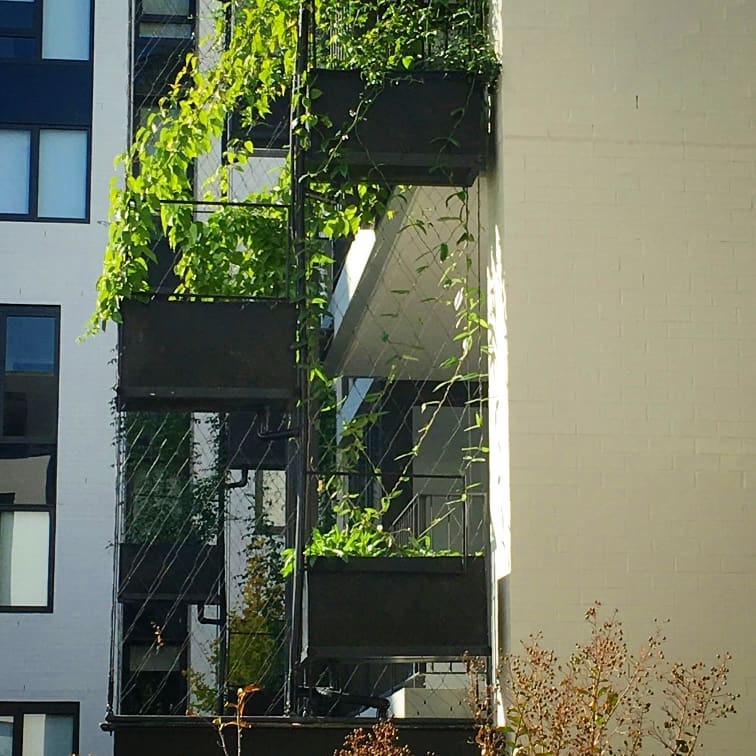Green infrastructure such as living walls, green facades and vertical gardens can provide a series of measurable positive benefits. While there are costs to consider in installation and ongoing maintenance, green infrastructure can reduce cooling bills, improve air quality and encourage biodiversity over the long term.
According to some studies, green facades and walls can reduce air conditioning costs by up to 60%, by creating an insulating layer and reducing urban heat island effect.
Research on green facades carried out in Adelaide found that the surface temperature of vegetated walls can be as much as 15 degrees lower than bare walls. Humidity levels in front of and behind facades have been shown to be 7% higher in summer (creating a cooling effect) and 8% lower in winter.
Green wall systems can also improve air quality by absorbing pollutants and dust.
A few surprising benefits
Studies by the Architectural Sciences Department at the University of Genoa show that vertical green structures can provide significant cost savings, with some green systems faring better than others.
The researchers looked at green facades with and without support structures, facades with planter boxes and green / living walls.
For all the green systems measured, the highest financial benefit came from reduced energy bills in the summer and, interestingly, increased rental income potential. There were some reduced energy costs shown in the winter as well, but these were less significant than for the summer months.
Another hidden benefit the researchers found was that a green facade or wall can add a protective layer to the wall itself, in effect shielding it from UV rays, rain, temperature variations and pollution. This means a green facade or wall could contribute towards building longevity.
If you have a green facade project in mind and would like to determine its potential benefit for your building, get in touch with our team for a discussion.






































